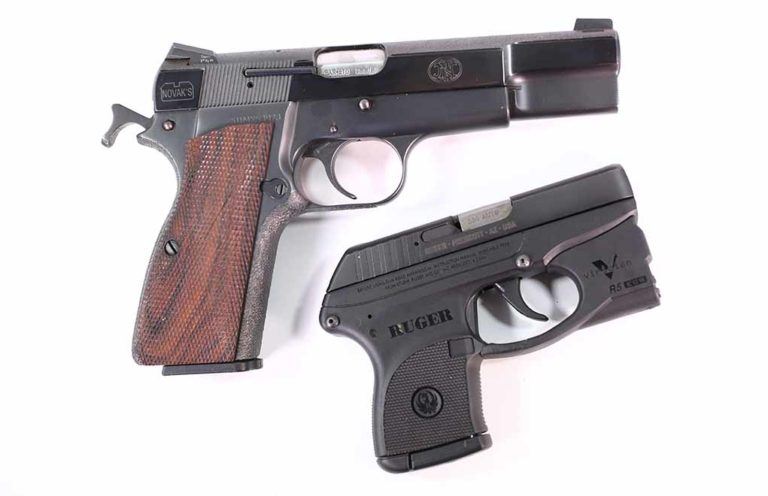
The trend in concealed carry is to go light on gun and gear. But when you consider life-or-death circumstances that might not be the best choice.
Considerations In Carrying More Gun And Gear:
- A larger caliber (9mm minimum) is mandatory.
- Veer away from off-body, pocket and ankle carry and get a hip holster.
- Plan on having 16 to 30 rounds (including what's loaded in your pistol) at the ready.
- A knife is a wise addition to your EDC kit.
- Carry your cell phone and the business card of your attorney.
- It's advisable to have a tourniquet or pressure bandage at the ready.
We’ve all done it: We’ve slipped down to the store, packing just a J-frame, and sometimes we don’t even have a reload onboard. Tsk-tsk. Or, the emergency tool option is a light, compact .380 pistol, because “you’ve got to have a gun” but don’t want the hassle of a “real” gun.
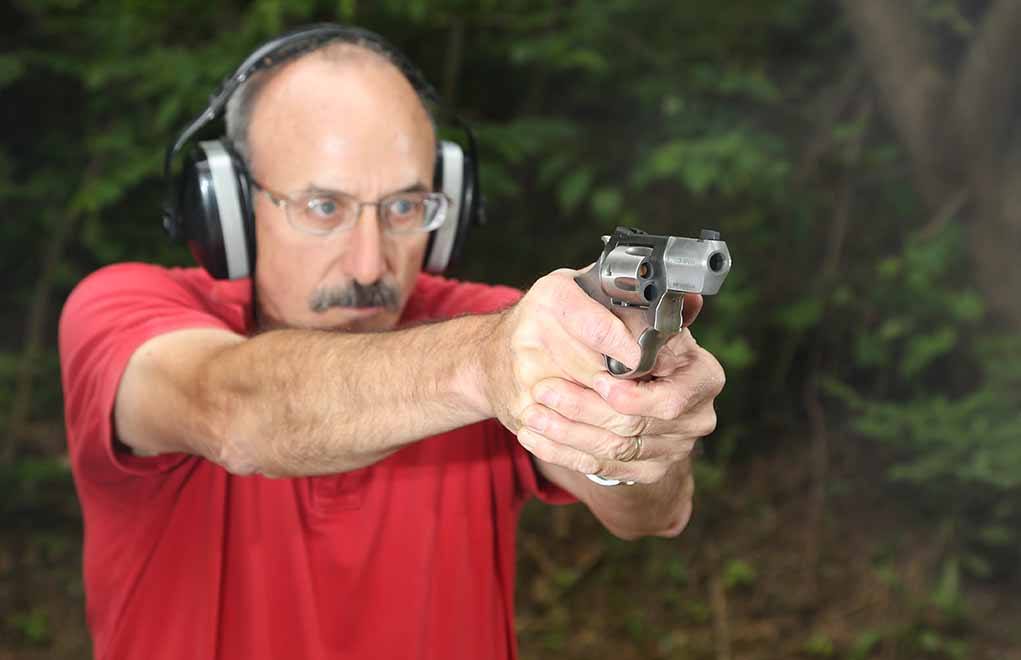
One of my friends in the gun writing biz, James Tarr, can always be found packing a hi-cap 9mm and a spare magazine or two. A long-time friend of mine, a retired chief of police, packs not only a full-sized all-steel 1911 — with spare magazines — but he carries a backup gun, a reload for that one as well, and a tourniquet.
Every time I think, “Maybe I’ll go light today,” I think about them, and I wonder what comments they would make were they to catch me with just a snubby in my holster? The teasing and jokes would not be pretty, and the ordeal would last a long time.
Playing The Odds
The usual response to suggesting that you actually carry a big gun and a reload is to bring up that dreaded subject of school — statistics.
“The average gunfight lasts X seconds, with Y shots being fired, at Z distances.” Usually 2-3 shots are fired, inside of 7 (or 5) yards, and lasting a handful of seconds. You’ve heard all the averages.
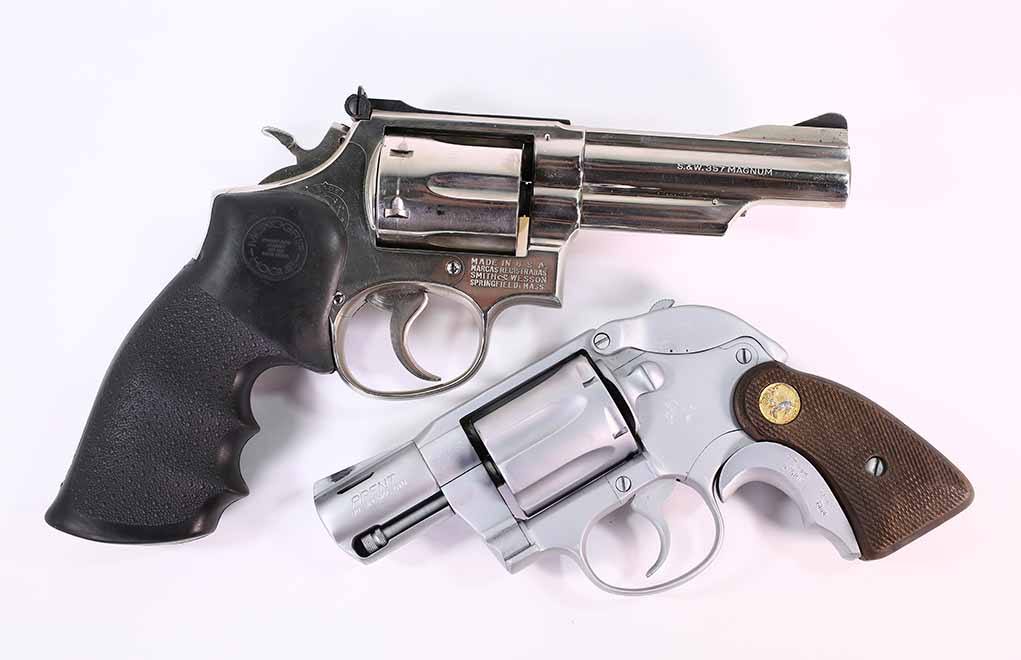
It has been a while since I delved deeply into the law enforcement statistics of shootings, but I do remember one detail when I was regularly reading the NYPD SOP-9 reports (back when you could actually obtain copies). The “average” was obtained by toting up every single incident where an officer was involved, and when firearms were discharged. So, the AD/ND, at home or at the precinct house, the animal dispatch incident, the suicide — those all got lumped in with the “real” gun battles. And, the usual result of a shootout in the city was that it ended with an empty revolver, which meant five or six shots fired by the officer, maybe one or two, or all five or six for the perp as well. It takes a lot of “empty revolver” shootouts to out-weigh the accidental discharges and the rest.
Those all pull down the average. And that was back when revolvers were the norm, before hi-cap 9mm pistols were ubiquitous.
Get More Self-Defense Information:
- Concealed Carry Sights: Which Are Best For Your Gun?
- XS Sights: The F8 Definitely A Sight To See
- Concealed Carry: Concealing A Single-Action Revolver
- 3 Simple Rules For Choosing A Defensive Handgun And Ammo
But here’s the kicker, the stat most people don’t think about: If you’re going to go by statistics, then you won’t be packing a firearm at all. The statistical likelihood that you will need a firearm is so low that, were you looking at the odds, you wouldn’t be packing. No, really. The number of firearms-needed incidents in the United States is a tiny fraction of the daily events of the population as a whole. If you are playing the odds, you won‘t pack a gun, and you don’t buy lottery tickets.
You are, however, packing a gun. You have made the decision to carry a firearm, to be part of the EDC crew, if you will, so you must look at it differently.
Assessing Requirements
There are two ways to assess the requirements and preparations needed for an emergency (if ever there was something that qualifies as an emergency, it’s when you need a firearm).
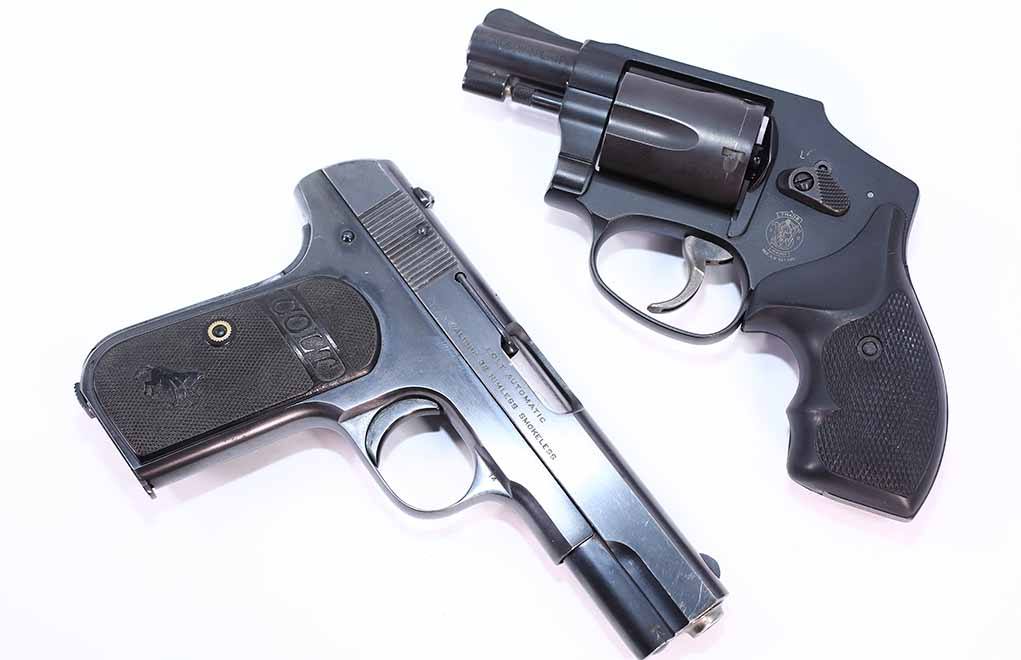
They are: the likelihood of occurrence, and the cost of unpreparedness.
The likelihood of occurrence is what insurance companies do. They crunch the numbers and they figure how many times a certain insurable event will happen within their underwriting area. They then add to the replacement cost of the event, item — whatever — a nice profit margin, and hand you the policy. Sign it or not, those things will happen. They might happen to you, they might happen to someone else, and they might not happen at all during the time you are in the insurance companies’ Area of Operation. If it happens to you, and you’ve paid for the policy, you win the bet. They lose. If you have paid, and nothing happens, they win. If you don’t pay, they lose, and if whatever happens does happen to you, you lose, too.
The odds of your needing a firearm are so slight that the “policy” of carrying one is an instance of paying a premium and never collecting on the insurance policy. I will, however, point out that not needing to use your EDC handgun is, unlike the insurance policy example, a win.
The cost of unpreparedness perspective is best illustrated, of all the examples to be found, with Strategic Air Command. Nuclear war? Especially today, highly unlikely. However, if you need the nukes, and you don’t have an up-and-running program to use them effectively and quickly, then you lose. You lose big. We all lose big. So, despite the very small probability of needing them, we have them, and a way to use them, because not having them means incurring a huge cost if you need them.
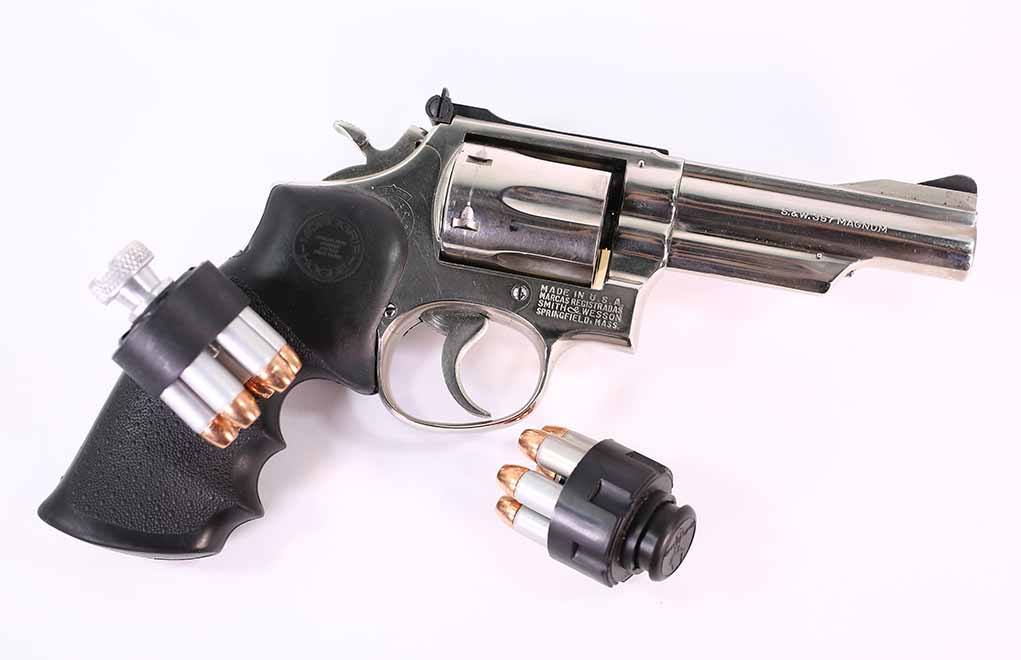
You deciding to EDC is, not to make too much of it, more of a SAC decision than a local insurance agent decision. If you need it and you don’t have it, then you lose. So, since you have decided to carry, you should do it properly.
Going All In
First, a real pistol is mandatory, in a big caliber (9mm Parabellum, minimum) and carried in an actual holster. No “pocket carry” and no gimmicks. This can be leather or kydex (or whatever the latest miracle of modern chemistry material might be), but it has to be a holster — one that covers the trigger guard. A security device or not is your personal preference.
As much as I don’t like giving Glock any credit, the baseline against which you will measure everything else is a G19. This gives you fifteen rounds of 9mm in the gun. If you happen to prefer a single-stack, like a 1911, then you go with a commander, lightweight or not. There, you get eight or 10 shots in the gun.
Where on your person do you carry it? That is between you and your back. Between you and your tailor. Between you and the temperature and humidity outside. Personal preference and all-day comfort rule here. And I mean it: on your person. Packing an EDC firearm in a case, purse, external garment or the like is not prudent. And it’s only called for it you are going to be carrying some place where you simply can’t have it on your person. Need I point out you shouldn’t spend any more time there than absolutely necessary?
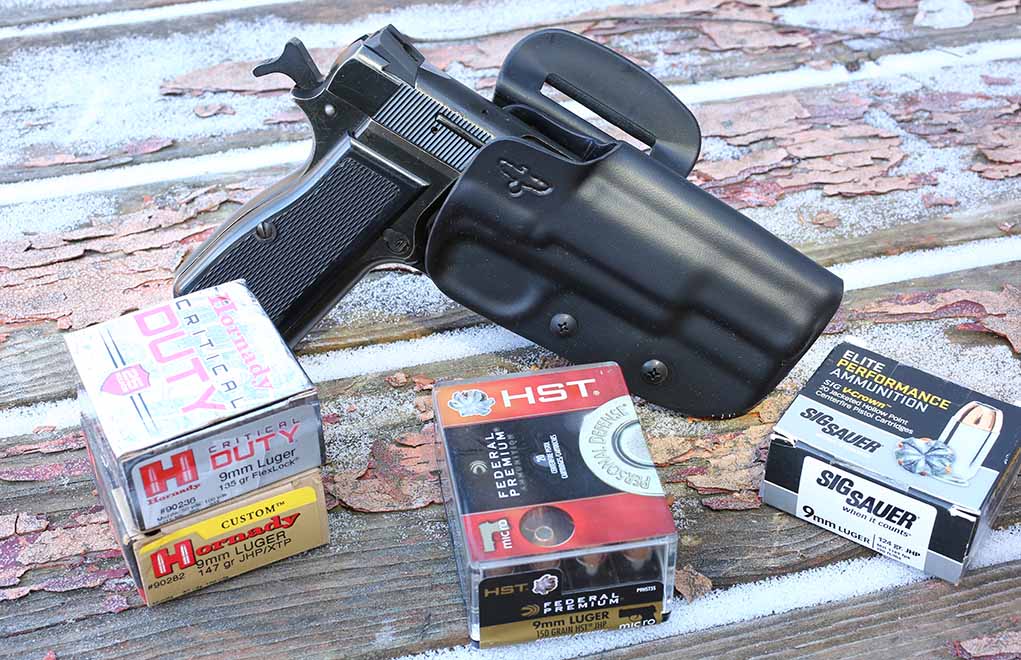
On some other place on your person, you carry spare ammo.
How much? If you’re packing a hi-capacity pistol, then a single spare should serve you just fine. You carry a spare magazine as much for the possibility that the one in the pistol stops working, as for needing extra ammo. Early Glock magazines had a penchant for launching baseplates, followed by spring, follower and ammo, when they got hooked on something. That’s not so much a problem now, but if it happens, having a spare would be good. If you are carrying a single-stack pistol, then two spares are called for. That gives you 16 to 20 more rounds, and two chances of replacing a bad magazine.
Oh, and revolver shooters? You should expect to have a pair of speedloaders on your belt. That gives you 12 more rounds (I really, really want to discourage you from packing a five-shot J-frame as your “main” gun), and Galco makes a super-click speedloader holder for that. It positions the speedloader over your belt, so three rounds are outside of it and three others are inside of it. It takes up less room than the spare magazine your pistol-packing brethren are using.
This is really not too much. You may (read: probably will) have to change your idea of what is “properly dressed” to accommodate the gear, but that isn’t too difficult. Not dressing like a slob will get the job done. However, the preparation for the job isn’t done.
Concealing More Than A Gun
You would be well-advised to be carrying a knife. Now, this will depend on local laws, but a locking folder — or better yet, a spring-assist folder — would be a good thing to have. My friend the police chief carries two, one on each side, and for a simple reason: If someone decides to “catch up on old times” vis-à-vis their arrest a decade ago, my friend can use either hand to access either knife and get himself separated from the bad guy.
You will, of course, have your cell phone to call for help, and the business card of your attorney — you know, not the one who handles the family deeds and wills, but the Criminal Defense attorney, the one who handles use-of-force problems.
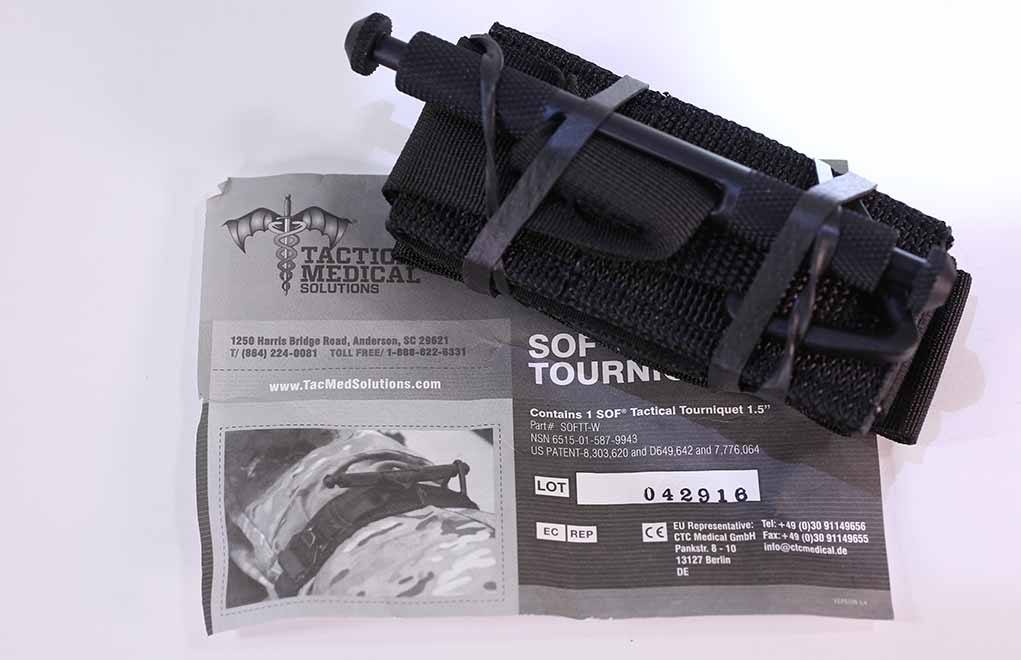
And there’s one more item: a tourniquet or pressure bandage. Wait, what? Again, if you’re in for a penny, you’re in for a pound. If you expect that you will be using the handgun that you are packing, there will be leakage — and it might be you.
Parting Thoughts
There was an incident a couple years back where a police officer who was carrying off-duty had an AD. The shot severed her femoral artery in two places. A fellow officer in the room used the tourniquet he was wearing to stop blood loss, and they took her to the hospital. Had the tourniquet been in the next room, she probably would not have made it. When there is shooting, even if you are the winner, you might have gotten shot. Having something to use to stanch the blood loss is prudent.
You may have heard the motto: Two is one, one is none. The idea is that if you have but one of an object, and it breaks or fails, you have nothing. Now, you can take this a bit too far. An acquaintance of mine never leaves the house without his minimum load out: two full-sized 1911s in .45 ACP. Plus two spare magazines for those pistols. And two J-frame revolvers, with a reload. And two locking tactical folders. Plus two flashlights. This, in addition to wallet, keys, phone, and whatever else.

I sometimes josh him about avoiding soft soil, lest he sink out of sight. He works in a very dangerous city, carries a badge, and he takes being safe seriously.
He’s in for a penny, all right. Are you?
Editor's Note: This article originally appeared in the Concealed Carry 2019 issue of Gun Digest the Magazine.

Next Step: Get your FREE Printable Target Pack
Enhance your shooting precision with our 62 MOA Targets, perfect for rifles and handguns. Crafted in collaboration with Storm Tactical for accuracy and versatility.
Subscribe to the Gun Digest email newsletter and get your downloadable target pack sent straight to your inbox. Stay updated with the latest firearms info in the industry.

![Best Concealed Carry Guns In 2025 [Field Tested] Wilson Combat EDC X9S 1](https://gundigest.com/wp-content/uploads/Wilson-Combat-EDC-X9S-1-324x160.jpg)


![Best 9mm Carbine: Affordable PCCs [Tested] Ruger Carbine Shooting](https://gundigest.com/wp-content/uploads/Ruger-Carbine-Shooting-100x70.jpg)
![Best AR-15: Top Options Available Today [Field Tested] Harrington and Richardson PSA XM177E2 feature](https://gundigest.com/wp-content/uploads/Harrington-and-Richardson-PSA-XM177E2-feature-100x70.jpg)

We got us a Rambo here. LOL. what I carry is dependent upon the situation. Also, my job isn’t to take down bad guys, terrorists, felons, or engage mall-shooters. So a J frame in the pocket (no reloads..*gasp*) works 99% of the time.
Advice for everyone reading this: stick to reading content from those who have Seen The Elephant regarding defensive gun use.
2 extra 15 round mags? Let me guess. You are one of those guys who “dresses around the gun.”